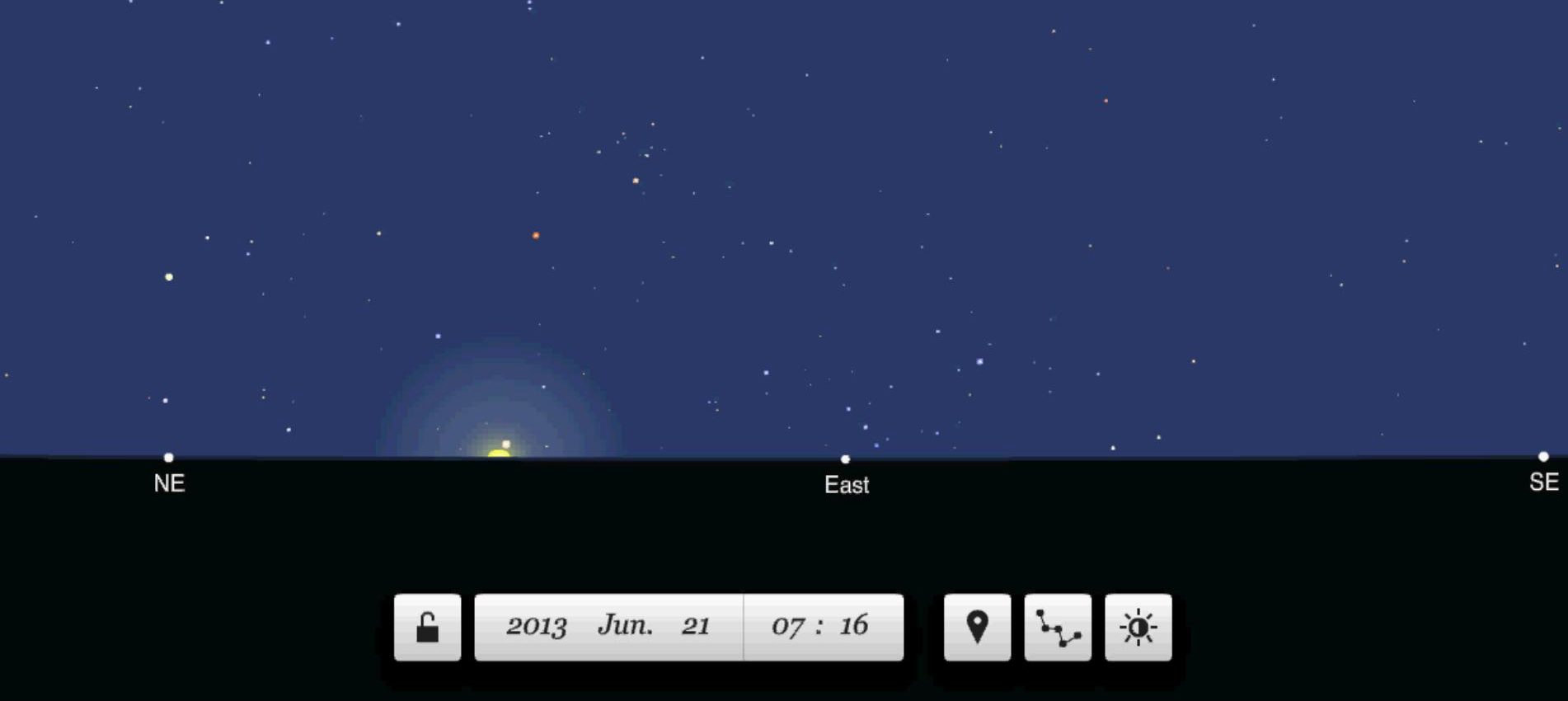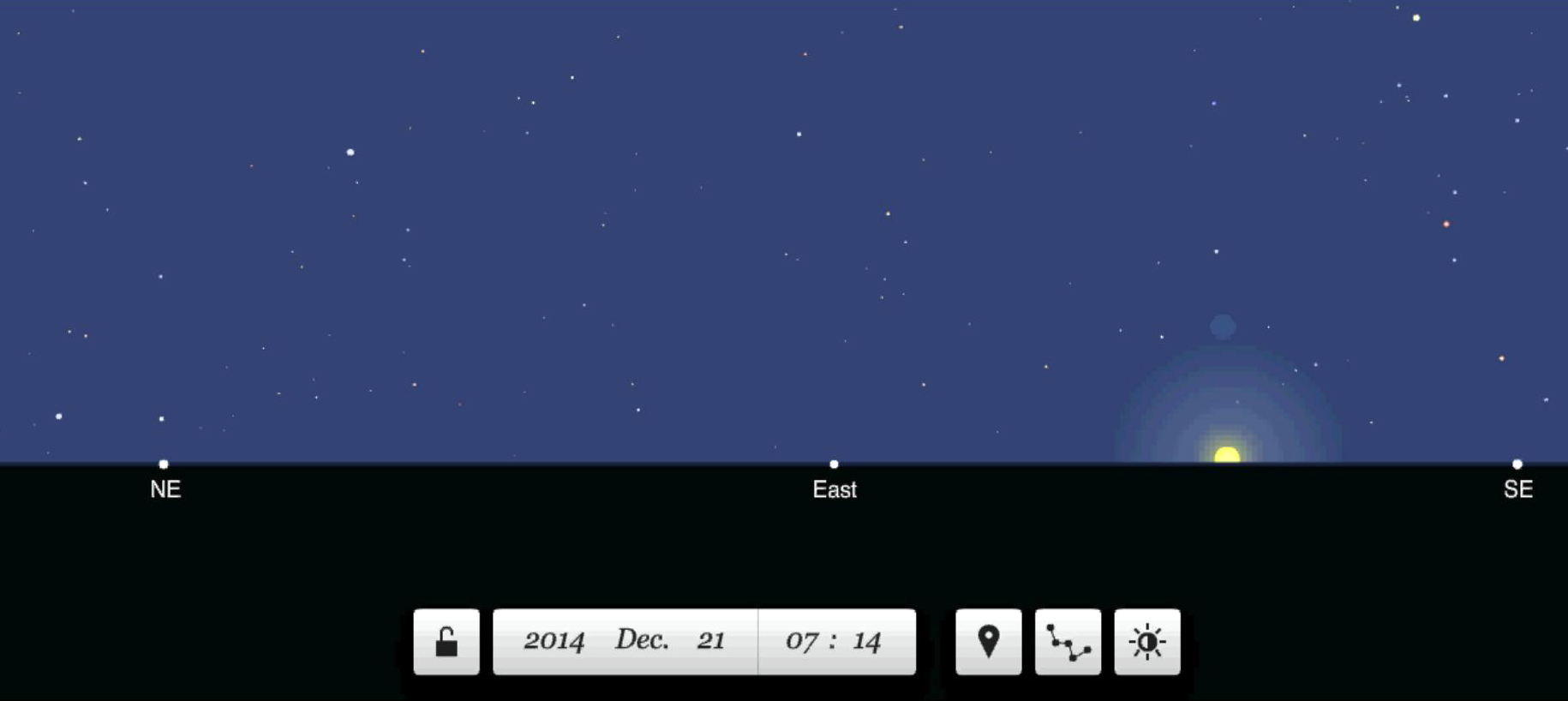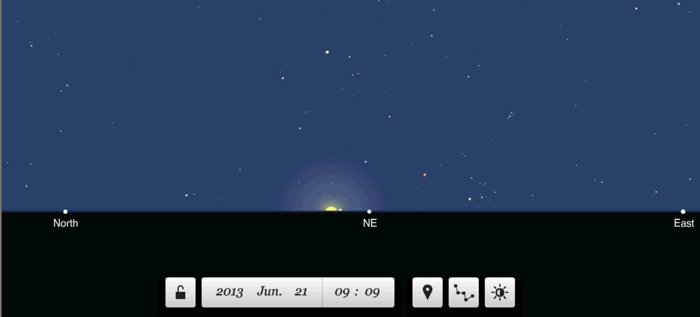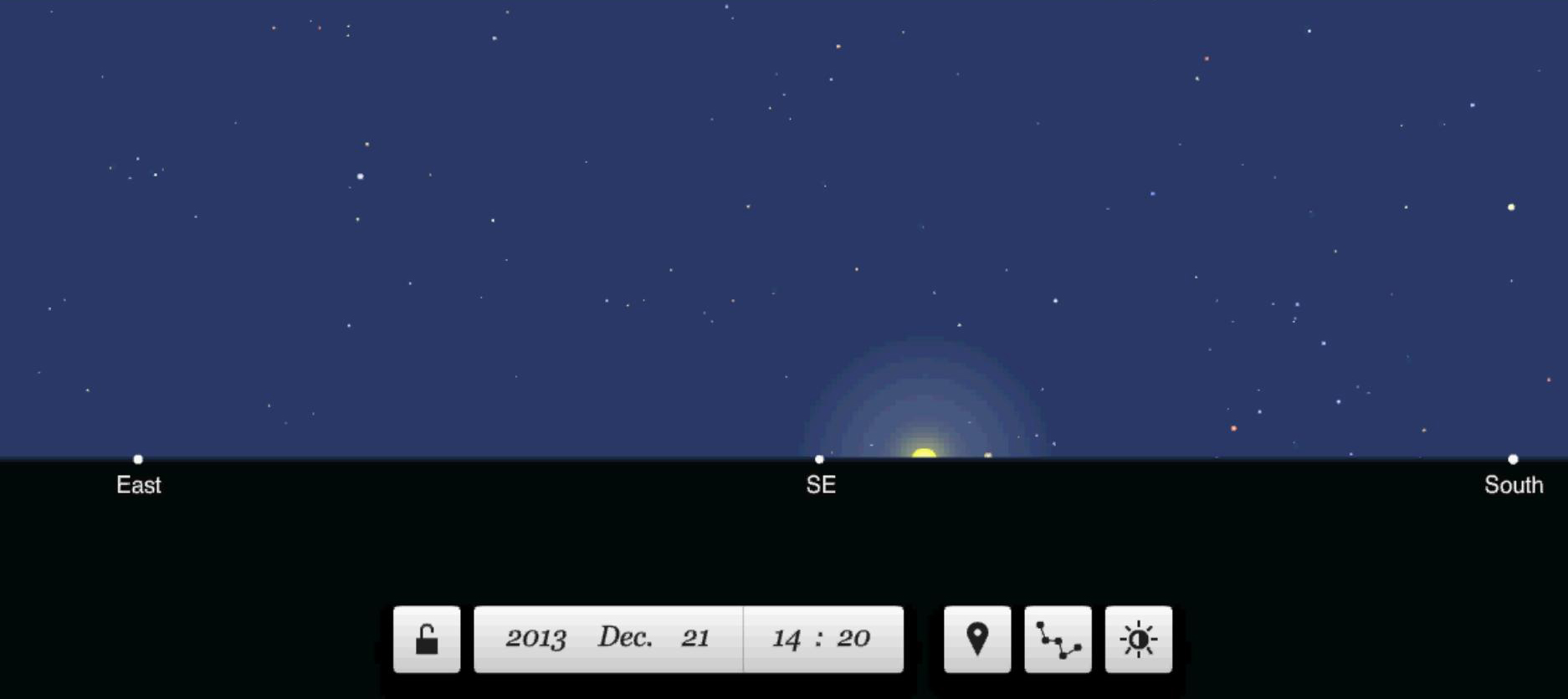Announcement: My online Land Navigation course includes four hours of video instruction, and two downloadable PDF books, all for about the same price as a typical paperback book. Get my Land Navigation course here.
How Latitude
Affects the Direction of Sunrise and Sunset
Now that you know how the date affects the direction of sunrise and sunset, let's look at the effect of latitude on this direction.
The angular difference between the direction of sunrise and due east, and the direction of sunset and due west is called the sun's amplitude.
The sun's maximum amplitude is seen on each June and December solstice. The exact maximum amplitude depends on your latitude. The farther north you go in the northern hemisphere or the farther south you go in the southern hemisphere, the greater is the sun's maximum amplitude.
The following table gives the sun's maximum amplitude for several latitudes:
|
Degrees of Latitude 05 10 15 20 25 30 35 40 45 50 55 60 65 |
Sun's Maximum Amplitude 24 24 24 25 26 27 29 31 34 38 44 53 71 |
- Example. According to this table, at latitude 30 degrees (North or South) the sun will rise and set 27 degrees away from due east and due west on both solstices, the dates of maximum amplitude.
A Couple of Examples of How Latitude Affects Amplitude
Let's look now at two specific examples of how latitude affects the direction of sunrise and sunset.
Direction of Sunrise in Central America
This first example shows the direction of sunrise in Central America on both the June and December solstices:

A Central American Sunrise on the June Solstice
Courtesy of Neave Planetarium
Notice in this screenshot above how the sun in Central America rises on the June solstice about 20-something degrees north of east. (Hint: It's 45 degrees from East to Northeast.) Given the latitudes of Central America, you can see this is consistent with the table above for maximum amplitude.

A Central American Sunrise on the December Solstice
Courtesy of Neave Planetarium
In December, however, the above screenshot shows the sun rising about 20-something degrees south of east, the maximum amplitude for that latitude--also consistent with the table.
Point of Interest
The sun's path across the sky is symmetrical, meaning the sun sets the same number of degrees and in the same direction (north or south) away from west as it rose away from east. If it rose, say 24 degrees north of east, it will set 24 degrees north of west. If it rose 24 degrees south of east, it will set 24 degrees south of west. And so on for any number of degrees. That convenient little fact makes navigating by the sun a lot easier than it otherwise would be. Nature can be incredibly complex, but once in a while she cuts us some slack by keeping things simple. :-)
Direction of Sunrise in Southern Alaska
Now, let's go way up north to southern Alaska, and check out the sunrise.

An Alaskan Sunrise on the June Solstice
Courtesy of Neave Planetarium
It's the June solstice, and the beginning of summer in Alaska. On this day, the sun's amplitude is at its maximum. Notice the sun is rising slightly north of Northeast, about 50-something degrees away from east. Given the latitude of southern Alaska, this is once again consistent with our maximum amplitude table above. (Ignore the hour of sunrise. It's not set to Alaska time.)

An Alaskan Sunrise on the December Solstice
Courtesy of Neave Planetarium
Now, let's switch to the December solstice, Alaska's first day of winter. Notice the sun is rising slightly south of Southeast, about 50-something degrees away from east--consistent once again with our table. (Once again, ignore the hour indicated in the screenshot.)
Pointer
If you want to navigate by the sun, your first task is to find the sun's maximum amplitude at the latitude where you'll be navigating, and memorize that number.
The sun's amplitude goes from zero on the equinox to its maximum on the solstice, but that change from zero to max doesn't take place evenly. Instead of cutting us some slack on this one, Mother Nature, as she often does, made things more complex. Be sure to see How the Sun's Amplitude Changes.
Return from Direction of Sunrise and Sunset
to Celestial Navigation

